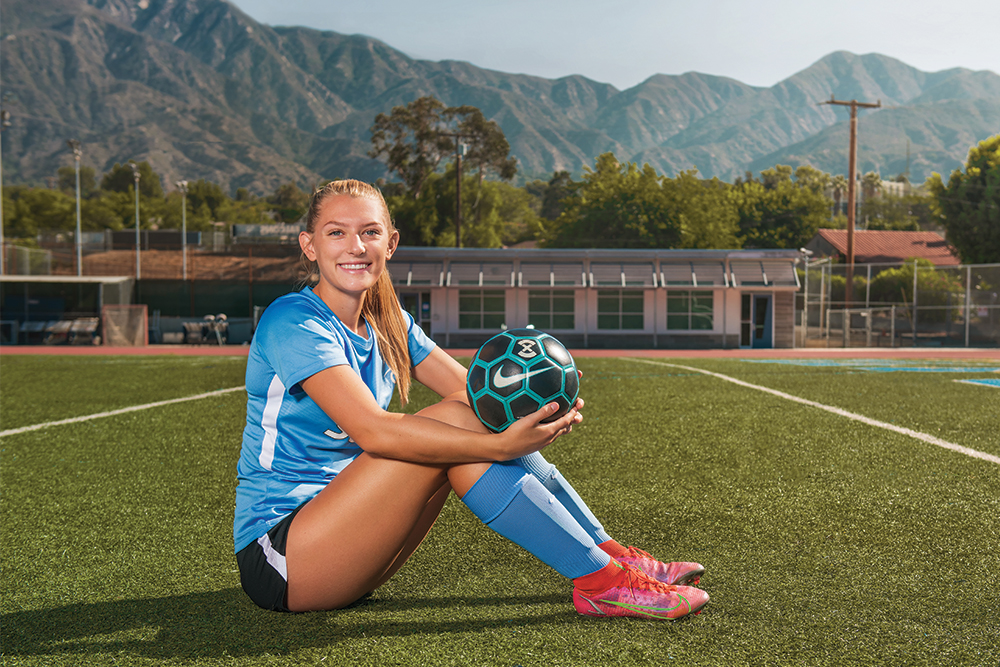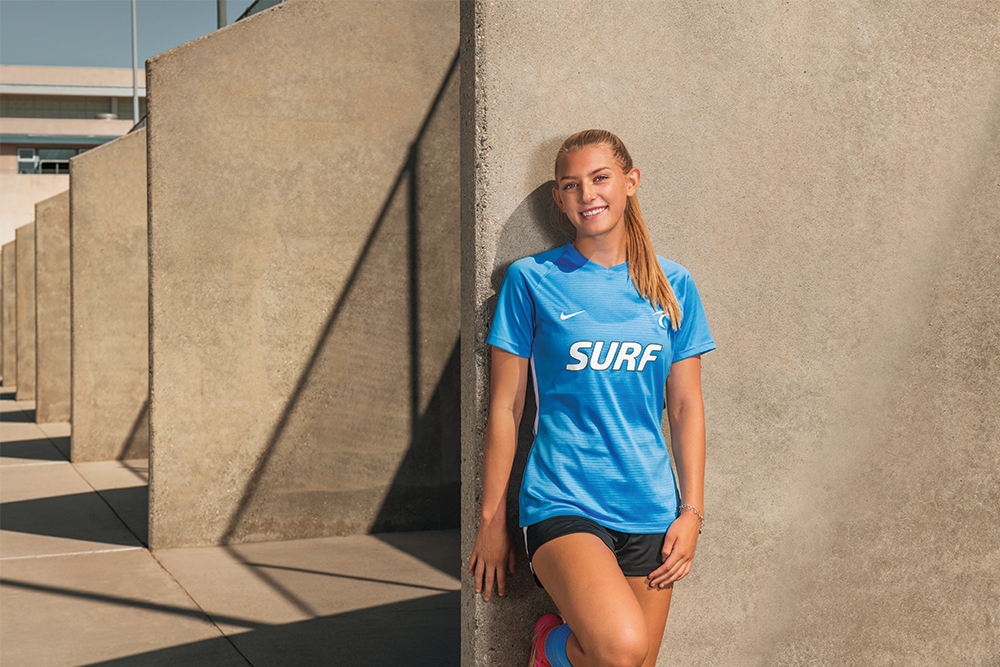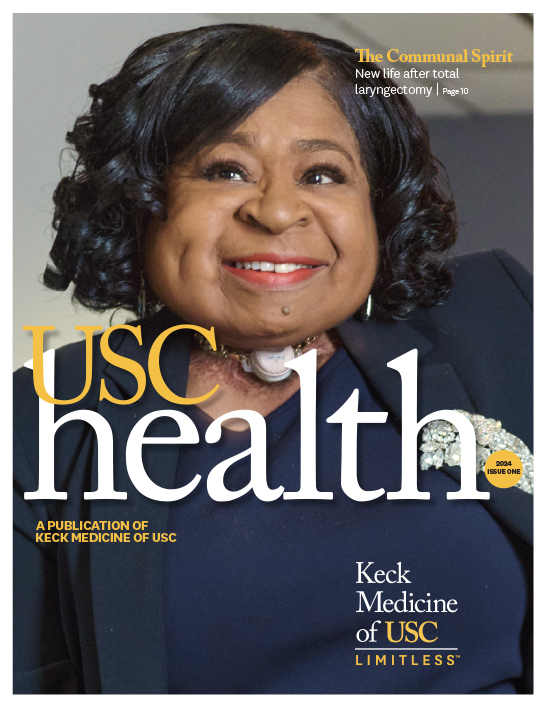
For 16-year-old Kaisa Lindman Marshall, it took the USC Orthopaedic Surgery sports medicine physicians at USC Verdugo Hills Hospital to get her back on the soccer field.
In January of 2020, shortly before her 16th birthday, Kaisa Lindman Marshall was enjoying one of her favorite sports when her world was suddenly turned upside down and an emergency call to a USC Verdugo Hills Hospital surgeon saved the day.
While playing in a soccer game at Crescenta Valley High School in La Crescenta, the Glendale resident planted her right foot in a defensive position when an opponent ran into Kaisa’s lower right hip, causing her knee to bend painfully inward, according to her mother, Kari.
“The team trainer determined that Kaisa needed a doctor,” Kari recalls, “so I called Dr. Owens on his cell phone because we’re neighbors and friends, and he had helped when my other two daughters had sports injuries.”
Stephen G. Owens, MD, is a physician at Keck Medicine’s USC Orthopaedic Surgery who specializes in orthopaedic surgery and sports medicine at USC-VHH.
Dr. Owens went to Kaisa’s home, examined her and determined she probably had a torn anterior cruciate ligament (ACL), the major stabilizing tissue that holds the knee together.
An MRI the next day confirmed his tentative diagnosis.
“I was pretty devastated,” Kaisa says. “It was scary, traumatic and painful, and I was afraid for my soccer future. But I appreciated how fast Dr. Owens came to my aid, and how clear he was explaining everything.”
Minimally invasive surgery, major impact
Dr. Owens, who mostly treats knee, shoulder and hip injuries, says his extensive experience with young athletes told him that surgery to reconstruct the torn ACL was essential.
“This kind of injury results in chronic instability in the knee, especially during rotating or pivoting movements that are inherent in sports,” says Dr. Owens, who is also a clinical assistant professor of orthopaedic surgery at the Keck School of Medicine of USC.
“And it would continue to buckle and give out, not just during sports, but even with daily activities. The alternative would be ‘wait-and-see’, which we might do with someone older, less active and not involved in sports.”
I’m able to do all the things I want to do. I’m back to soccer, running, spikeball and volleyball … I’m stronger now than I’ve ever been.
Kaisa Lindman Marshall, patient, USC Verdugo Hills Hospital
First, though, they had to wait for the swelling to go down. And when the pain had decreased several days after the injury, Kaisa began physical therapy to improve her leg’s range of motion and strength.
Four weeks after the ACL tear, Kaisa went to USC-VHH for minimally invasive outpatient surgery.
“To reconstruct the ACL, I used special tools to go into the knee through a one-quarter-inch incision to position and secure a graft taken from the large tendon connecting her kneecap to her leg bone,” Dr. Owens explains. “To help with healing, we injected platelet rich plasma (PRP) taken from her blood.”
This is one of the most common procedures performed at USC-VHH through the USC Epstein Family Center for Sports Medicine, which has medical specialists trained to treat a wide range of sports-related injuries.
“We can lean on and refer to each other when a patient’s issue is not in our area,” Dr. Owens says. “For me, that would be spine, hand, ankle or foot problems for which colleagues could provide great treatment.”

‘Stronger now than I’ve ever been’
In addition, Dr. Owens and the USC Orthopaedic Surgery physicians have spent years building relationships with trainers at local high schools and at Glendale Community College, helping to ensure continuity of care for student athletes.
Teens like Kaisa, Dr. Owens says, have good outcomes not only because of the procedures, but also because they follow instructions for post-operative care.
“She started physical therapy at home the day after surgery,” Kaisa’s mother Kari says, “and then went twice a week for more than a year to get her soccer-fitness ready.” Because of the COVID-19 pandemic,
Kaisa went back to practice in January 2021 and her first game was in February. “I feel amazing now,” says Kaisa, who was captain of the soccer team for the season.
“I’m able to do all the things I want to do. I’m back to soccer, running, spikeball and volleyball. I do CrossFit at a gym, and it’s rare that I have knee pain. I’m stronger now than I’ve ever been.”
Topics


